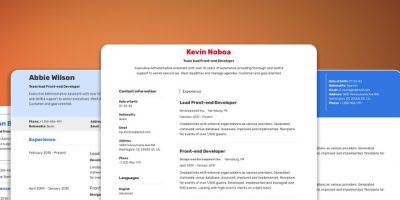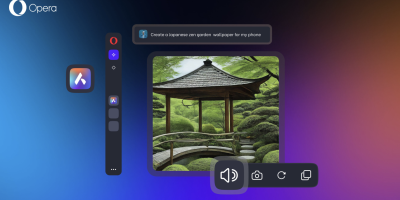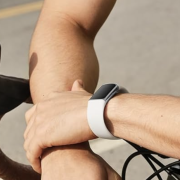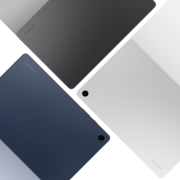A recent survey of over 20,000 webinar organizers revealed that over 95 percent of participants now view the medium as critical to their commercial success. The story of the rise of the webcast as a brand-building behemoth has surprised many people who keep a close eye on marketing, this pundit included.
It’s not so much that webinars came out of nowhere. Many would argue that their audio equivalent, podcasts, have solidified a quiet corner of brand building for a decade or more. What’s surprising is how central they’ve become in a relatively slim sliver of marketing history. Just as fascinating as the phenomenon of webcasting itself has been the meteoric pace of improvement in tools for handling the production and broadcasting process. Here are five facts about webinar software that may surprise you.
1. Good Quality Software = Good Quality Content
This statement isn’t particularly surprising at first glance. It might even seem completely intuitive. But the extent of the correlation between quality webinar software and quality webinar content is striking — especially if you come from a more conventional text-based corner of marketing. Analysis of the best webinar software reveals constant evolution and surprising developments in our growing understanding of how to win people over with quality content.
The thing about writing — and I include everything from long-form research deep-dives through to micro-blogging here — is that good software helps the process, but it doesn’t make the process. A talented writer can transform a brand’s profitability with a chewed Bic biro and three feet of single-ply loo paper if they put their mind to it. Even YouTube and podcast material can leverage a certain expectation of rawness to forgive minor production clunkiness.
Webinars don’t work that way. Audiences expect a professional production from first impressions to post-presentation follow-up. The experience needn’t be “slick,” but it does need to be impeccable. And anything less directly erodes a brand’s credibility.
It’s surprising just how deeply webinars rely on cutting edge software.
2. Webinars are the Last Bastion of Desktop-Centric Content
The vast majority of channels for starting a conversation with a prospect are mediated through a portable device. Blog posts, YouTube, social media engagement, you name it: marketers are increasingly ideating, developing, and delivering these touchpoints with small displays uppermost in mind.
The preferred method of webinar consumption is marching in the other direction. Just as podcasts are the audio world’s long-form content, webinars are the long-form content for video content. Over 90 percent of webinar watchers are doing so on a big, non-portable screen.
What does this mean?
The good news is that it means you have a captive audience who are less likely to be distracted. Winning a webinar viewer means you’ve won buckets of focused attention. The challenge is that you’ll have to think differently. The psychology of sitting at a desk to learn is inherently non-casual. Your audience has chosen to make a considerable time investment, but they expect significant returns.
A captive audience is a holy grail for someone with a message to sell, but larger screens come with great expectations.
3. We Have Forensic Intel on Content
We know that you’ll be hitting over 85% of your audience’s time availability sweet spot if you time your webinar to run between 30 and 45 minutes. Where exactly you fall inside that window likely depends on a host of factors, from your delivery style to your content’s complexity. But unless a brand is an extreme outlier, it can probably bank on 29 minutes being too short and 46 minutes being too long.
These are useful parameters as a rule of thumb for time management, but the data’s value goes conceptually deeper than that. You can reverse engineer a complete strategy from that number. If you speak at an average broadcast pace of 120 to 150 words per minute (and unless being a fast-talker is part of your schtick, you probably should practice doing just that), you know you have around 4,000 words of content to deliver.
In other words, the data tells us that the perfect webinar is more information-rich than a blog post but less than an e-book. For most content developers, that will likely look like a rigorous research-based deep dive. The data we have on how to design a webinar is surprisingly granular and strategic. It’s more clear cut than most corners of professionally developed content.
4. Webinars Change Minds
Webinars have been a “thing” long enough to garner a substantial body of peer-reviewed research. We’re now beginning to see a steady trickle of statistical and behavioral studies that delve deeper into webinar content’s demonstrable efficacy.
Webinars are exceptionally good at guiding an audience to an informed decision. The medium carries significant decision-making weight, converting opinions from neutral to favorable more predictably and with fewer points along the customer journey. Webinars offer proven returns on investment for brands looking to change prospects’ minds.
5. A Sense of Immediacy Is Crucial
The most effective webinars have a sense of immediacy. Not the word choice here! While live content is generally superior to evergreen content, with the right strategy, you can generate a sense of immediacy around static content.
You can build webinars with a view of the content being evergreen. Still, you’ll need to surround the content itself with interactive elements, including chat-simulators, post and pre-supporting messages (preferably kept fresh and aligned to your more dynamic content), and options to communicate directly with a brand advocate for maximum attendee engagement.
Immediacy is ideal, but if that level of dynamism doesn’t fit with your content, invest in building a feeling of responsiveness, an aura of time criticality, and real options for quick-fire engagement with a real person.
Webinars are an essential part of the customer education landscape. To deliver them effectively, though, you’ll need to understand what makes a well-delivered online presentation powerful. You’ll be on solid ground if you carefully select the right software for your brand, set high production standards, and constantly strive for a data-driven approach.













Comments